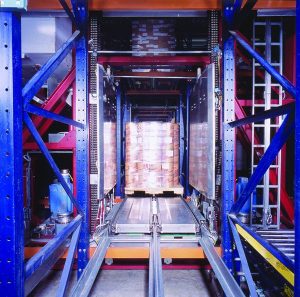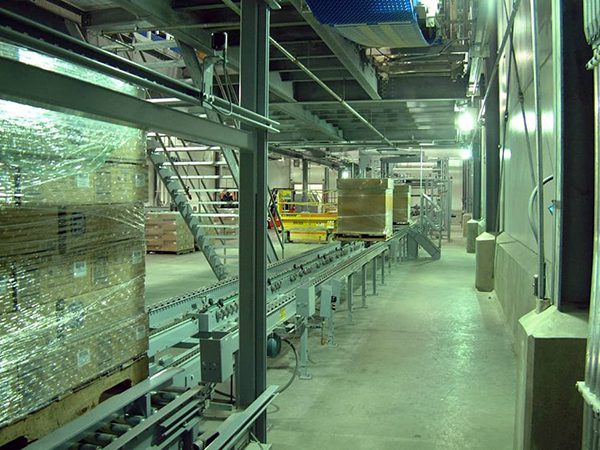By Dan Labell, Westfalia Technologies, Inc.

In recent years, the cold supply chain has grown to include not only food and beverage companies, but also biopharmaceuticals. In fact, Pharmaceutical Commerce projects that by 2020 the global biopharma industry will produce $360 billion worth of products that require refrigerated storage and transport. Combine this with the food and beverage industry and the cold chain is a big business.
But with sub-freezing environments and the need to maintain safe product temperatures, the cold supply chain also presents unique challenges for companies. Fortunately, technology exists that can help companies overcome these challenges, and better yet, thrive – automation.
Below are four ways organizations and the cold supply chain can benefit from automation:
With temperatures sometimes reaching -38 degrees Fahrenheit, the cold chain can be a grueling work environment. Currently, the majority of refrigerated and frozen food warehouses employ manual operations, requiring staff to pick and palletize orders in these frigid conditions. But by installing high-quality and cold-engineered automated order picking systems, or systems that bring cold product out of the freeze to be picked, businesses that mostly ship full pallets can let technology do more of the work. Thus, staff can take on safer, higher-level responsibilities in the management and maintenance of these automated systems. However, if a business still requires fork-trucks operate in freezer environments, these fork-trucks can be fitted with heated cabs so the operators are protected from the frigid environment.
In the cold supply chain, it is important to keep products in the proper climate controlled environment as long as possible, reducing the possibility of product quality degeneration and spoilage. By employing just-in-time (JIT) fulfillment strategies, warehouses don’t have to prepare orders far in advance of when trucks arrive for pick up and maximize the amount of time that items are kept in storage within the automated system. The speed and reliability of high-density automated storage and retrieval systems (AS/RS) allows pharmaceutical and food and beverage companies to successfully implement this strategy, thereby ensuring a safer pharmaceutical and food and beverage supply chain.
In addition, a Warehouse Execution System (WES) combined with an AS/RS can help companies employ First Expired, First Out (FEFO) inventory management by providing complete control over inventory and the movement of products in the warehouse. This prevents warehouses from holding products for too long and expiring, leading to product waste, or worse, reaching consumers and becoming a safety concern.
An AS/RS enables companies to better utilize their existing space by storing more product within the same (and often smaller) building footprint. Retrofitting an existing facility with an AS/RS can increase the storage capacity of an existing facility by 30 to 50 percent. In the case of new buildings, an AS/RS can reduce the overall building footprint by as much as 50 to 100 percent, thereby lowering its environmental footprint along with building costs.
By improving space utilization, there is less area to cool and often fewer refrigeration units are needed, leading to additional energy and cost savings. Further cost reductions arise from fewer interior lights and the energy savings made possible by using storage and retrieval machines (S/RMs) outfitted with regenerative braking. These mechanisms allow companies to store surplus braking energy or transfer it to the power grid for use by other machines operating on the same grid.

In a traditional, manual refrigerated warehouse, workers require frequent “warm-up” breaks, which can lead to warehouse inefficiencies in time, labor and energy usage. Automated technologies, such as a high-density AS/RS, can pick products in refrigerated and frozen environments without the need for breaks. Moreover, automation can dramatically increase picking accuracy which reduces inefficiencies due to repackaging and operational bottlenecks as a result of incorrect orders.
As the cold supply chain continues to grow and become more complex, automation can relieve some of the growing pains. Food, beverage and pharmaceutical companies that choose to automate will be poised to overcome the challenges of frigid work conditions, ensure they deliver safe and reliable products to market, and uncover new efficiencies and cost savings.
 Dan Labell is the president co-owner, and founder for York, Pa.-based Westfalia Technologies, Inc. (www.westfaliausa.com), a leading provider of logistics solutions for plants, warehouses and distribution centers since 1992. Under Labell’s leadership, Westfalia is transforming supply chains through the power of warehouse automation. With Westfalia’s automated solutions – including its high-density AS/RS and Savanna.NET® Warehouse Execution System (WES) – companies in a wide range of industries are optimizing their warehouse processes and maximizing efficiencies and savings.
Dan Labell is the president co-owner, and founder for York, Pa.-based Westfalia Technologies, Inc. (www.westfaliausa.com), a leading provider of logistics solutions for plants, warehouses and distribution centers since 1992. Under Labell’s leadership, Westfalia is transforming supply chains through the power of warehouse automation. With Westfalia’s automated solutions – including its high-density AS/RS and Savanna.NET® Warehouse Execution System (WES) – companies in a wide range of industries are optimizing their warehouse processes and maximizing efficiencies and savings.
In this episode, I sat down with Beejan Giga, Director | Partner and Caleb Emerson, Senior Results Manager at Carpedia International. We discussed the insights behind their recent Industry Today article, “Thinking Three Moves Ahead” and together we explored how manufacturers can plan more strategically, align with their suppliers, and build the operational discipline needed to support intentional, sustainable growth. It was a conversation packed with practical perspectives on navigating a fast-changing industry landscape.